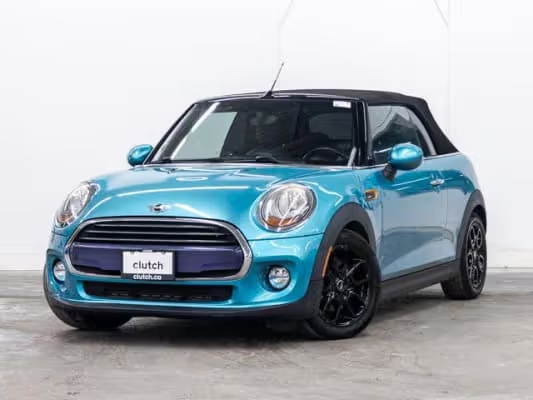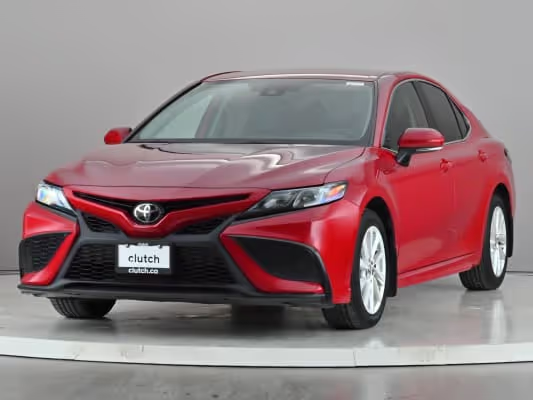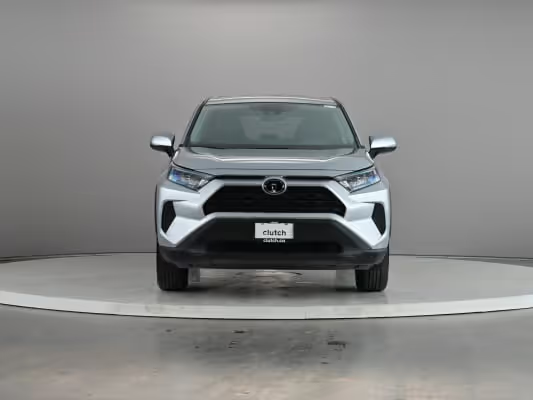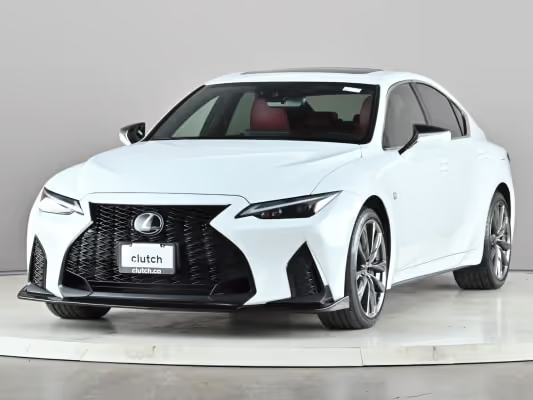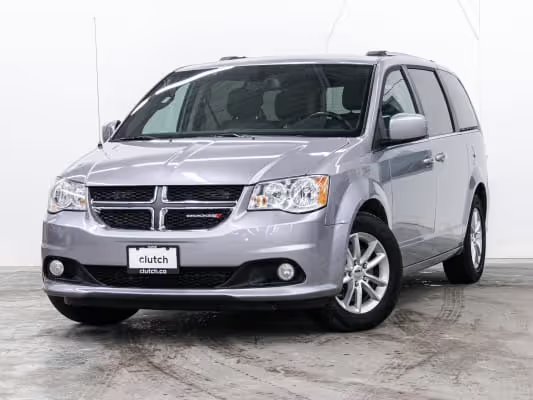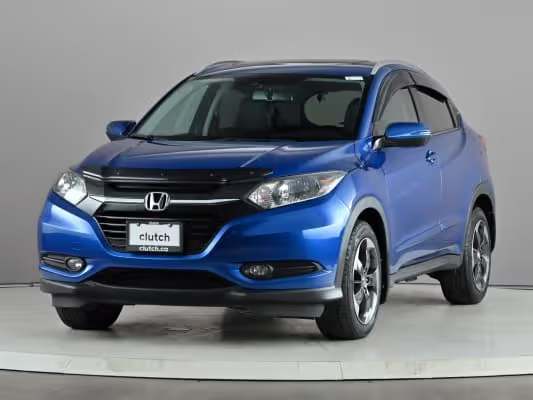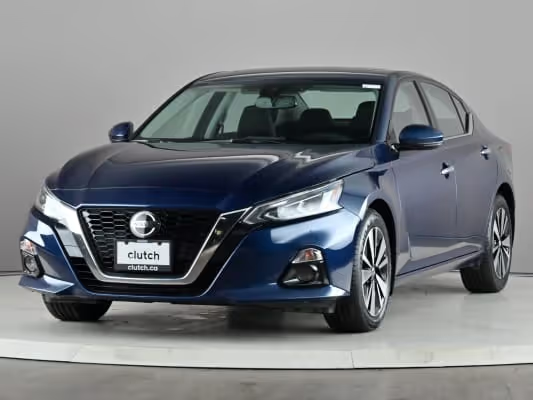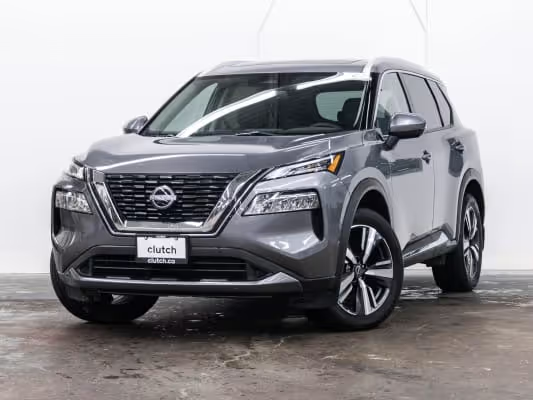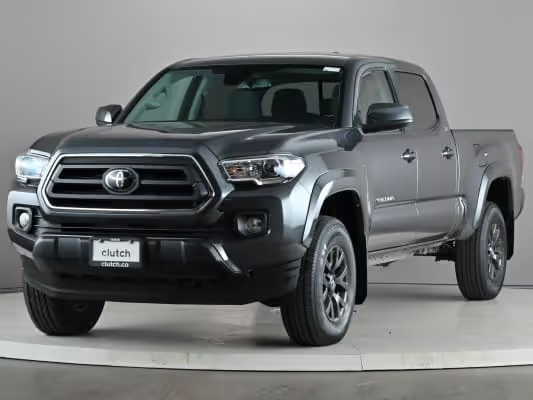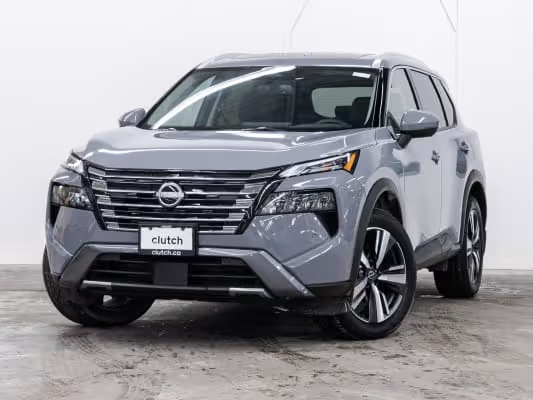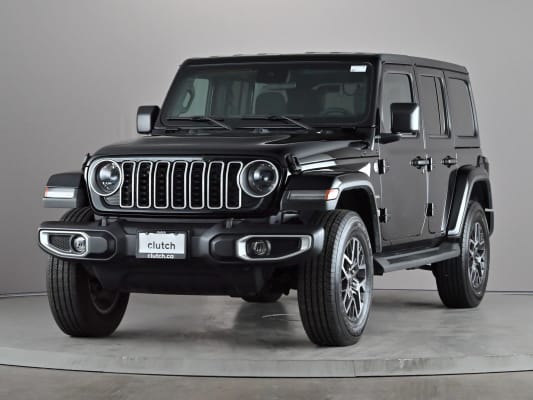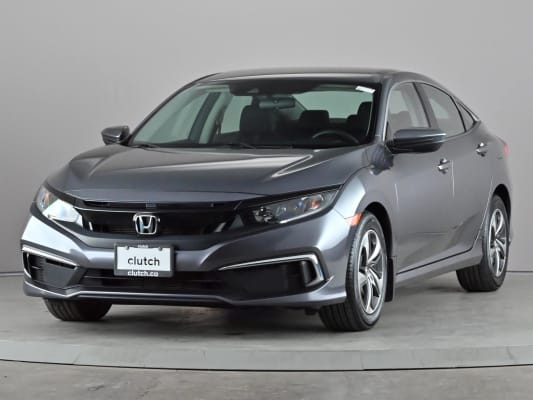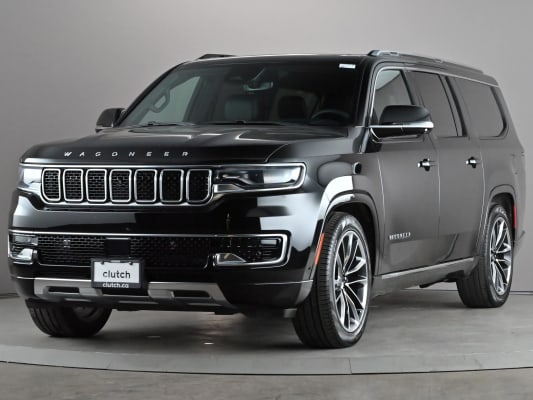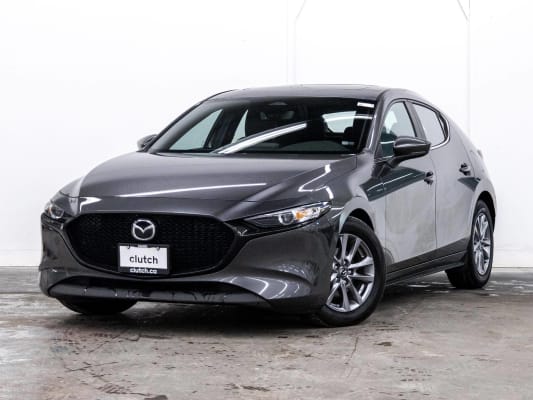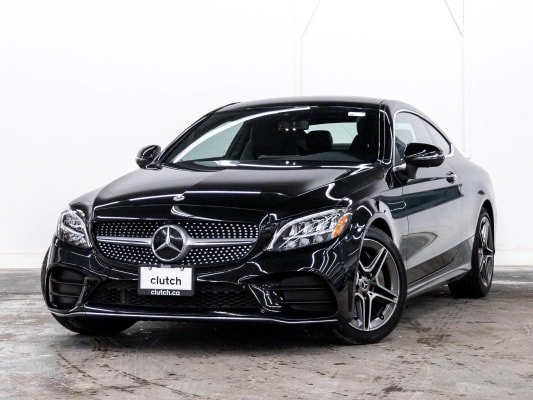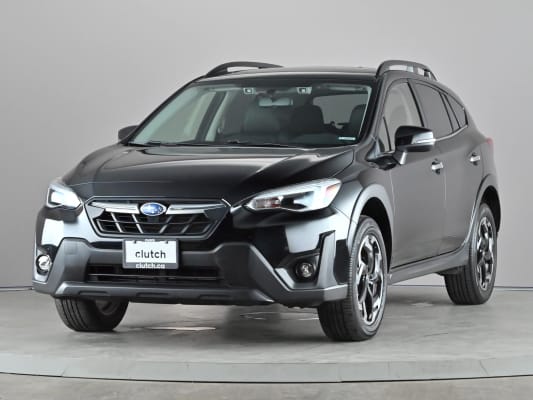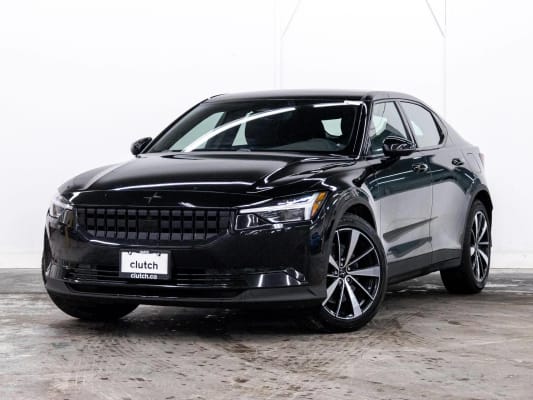The Honda CR-V is a Canadian favourite for a reason. With its roomy cabin, dependable all-wheel drive, and reputation for long-term reliability, this compact SUV strikes a perfect balance between everyday comfort and go-anywhere practicality. Whether you’re navigating slushy city streets in winter or heading out to a cottage in the summer, the CR-V delivers consistent performance year after year.
But just how long can a CR-V really last?
If you’re weighing the pros and cons of buying used, or wondering whether your current CR-V still has plenty of life left, knowing its true lifespan can help you make smarter decisions about maintenance, resale, and when (or if) to upgrade. In this guide, we’ll break down how many kilometres most CR-Vs last, what factors affect their longevity, and how they compare to similar SUVs like the Toyota RAV4 and Subaru Forester.
Average Lifespan of a Honda CR-V
With proper maintenance, most Honda CR-Vs can last between 300,000 and 400,000 kilometres, and many have been reported to reach 500,000 km or more. This typically translates to 15 to 20 years of use for the average Canadian driver. That kind of longevity places the CR-V among the top performers in the compact SUV segment for long-term reliability.
Industry sources back this up: MotorAndWheels reports an average CR-V lifespan of 250,000 to 300,000 miles (roughly 400,000 to 480,000 kilometres), while others note that well-maintained CR-Vs can “go well past 320,000 km” and still retain value. Real-world examples from forums and owner communities consistently highlight CR-Vs hitting the 400,000 to 500,000 km mark with few major mechanical issues, especially those used primarily for highway driving.
This durability stems from Honda’s strong track record for engine and transmission reliability, affordable upkeep, and a simple, functional design that holds up well over time. Combined with widely available parts and service across Canada, it’s no surprise the CR-V remains a top pick for long-term ownership.
Key Factors That Affect CR-V Longevity
While the Honda CR-V is built to last, its actual lifespan depends on a handful of real-world factors. If you’re looking to get 400,000 km or more from your CR-V, here’s what makes the biggest difference:
- Routine Maintenance Is Non-Negotiable:
CR-Vs that receive regular oil changes, fluid flushes, brake servicing, and air filter replacements tend to run far longer than those with sporadic upkeep. Follow Honda’s recommended service schedule, and keep all maintenance records-especially if you plan to resell. - Highway Driving Helps:
Highway kilometres put less strain on the engine, brakes, and transmission than city stop-and-go traffic. Owners who use their CR-Vs primarily for commuting often report smoother operation and fewer repairs over time. - Winter Driving Takes a Toll:
Canadian winters can accelerate wear, particularly on suspension components and the undercarriage. Salt exposure leads to rust-especially around the rear wheel wells and frame rails-so rustproofing and regular underbody washes can significantly improve long-term durability. - Usage Type Matters:
CR-Vs used for heavy towing or regular off-roading may experience faster wear on drivetrain components. While the CR-V is capable, it’s designed more for light-duty use and all-weather versatility than rugged terrain. - Watch for Collision History:
Even the most reliable SUV can suffer long-term reliability issues if it’s been through a major crash. Always check a CARFAX report before buying used to spot previous accidents or insurance claims. - Model Year Differences Exist:
Some CR-V generations are more durable than others. For example, the 2007-2011 models are known for their longevity, while 2017-2018 units had known issues with oil dilution in the 1.5L turbo engine. (We’ll cover these in more detail later.)
How the CR-V’s Reliability Compares to Other SUVs
The Honda CR-V has earned its reputation as one of the most dependable compact SUVs in Canada-but how does it stack up against its closest rivals in the long-term reliability race?
- CR-V vs. Toyota RAV4:
The Honda CR-V vs the Toyota RAV4 is the most direct matchup in the segment. Both the CR-V and RAV4 regularly reach 300,000+ km with minimal issues. While the RAV4 tends to have slightly fewer powertrain concerns in recent years, the CR-V often delivers a more comfortable ride and a bit more interior flexibility. The main blemish for CR-Vs is the 1.5L turbo engine in 2017-2018 models, which was known for oil dilution issues–a problem not shared by most RAV4s. - CR-V vs. Mazda CX-5:
The CX-5 gets high marks for styling and handling, but long-term durability tilts in the CR-V’s favour. Older CX-5 models have reported more frequent suspension issues, and Mazda’s resale values don’t quite match Honda’s. The CR-V also tends to have a roomier interior and better long-term parts availability across Canada. - CR-V vs. Hyundai Tucson:
Hyundai has made major strides in quality, but the Tucson’s reliability history isn’t as consistent as the CR-V’s. Older Tucson models often faced premature engine and transmission wear, while the CR-V maintained a more stable track record. That said, newer Tucsons offer competitive features, so condition and service history are key when buying used. - CR-V vs. Subaru Forester:
The Forester is another Canadian favourite, especially in snowy provinces, thanks to its standard all-wheel drive. However, older Foresters (especially pre-2014) had widespread head gasket and oil consumption issues. CR-Vs, on the other hand, are generally more reliable over time and require less expensive engine repairs.
Real-World Lifespan: What CR-V Owners Report
Honda officially rates its vehicles for long-term durability, but it’s real-world results that truly prove the CR-V’s staying power-and Canadian drivers have plenty of proof. Many owners report getting 400,000 km or more from their CR-Vs with only basic maintenance, especially those who drive mostly on highways and follow the factory service schedule.
- 300,000 km and Still Going Strong:
On CR-V owner forums like r/crv and Honda-Tech, it’s common to find posts from drivers with 300,000+ km on the odometer and no major powertrain repairs. These high-mileage CR-Vs often run on their original engines and transmissions, provided oil changes and other services are done regularly. - Trusted for Work and Family Life:
The CR-V is a favourite among Uber drivers, rural commuters, and families because of its low running costs and solid reputation. Whether used in Ontario’s stop-and-go traffic or through harsh Alberta winters, the CR-V often performs reliably across varied conditions. - Canadian Winters, No Problem:
Despite our rough winters, rust resistance has improved significantly in recent CR-V generations. Many drivers report that their CR-Vs have held up well over a decade or more with regular undercarriage washes and the occasional application of rustproofing spray. That said, older models (especially pre-2012) are more prone to corrosion, particularly around the rear wheel arches and liftgate. - Minimal Repairs, Mostly Wear Items:
High-mileage CR-V owners consistently say that major breakdowns are rare. Most report replacing only routine wear-and-tear components-brakes, shocks, tires, and the odd suspension bushing. This contributes to the CR-V’s low total cost of ownership.
In short, if you take care of a CR-V, it will take care of you. Many Canadians are still driving CR-Vs built 15 to 20 years ago-and aren’t in a rush to replace them anytime soon.
Common Honda CR-V Problems (and How to Avoid Them)
Even with its reputation for reliability, the Honda CR-V isn’t completely free of issues. Certain model years have experienced recurring problems that are worth knowing about-especially if you’re shopping used. Here are the most common concerns and how to handle them:
- Oil Dilution in Turbo Models (2017-2018):
CR-Vs equipped with the 1.5L turbocharged engine-especially in colder climates-sometimes experience oil dilution, where fuel mixes with the engine oil. This can lead to long-term wear if not addressed. Honda issued software updates and warranty extensions in Canada, but it’s wise to check if the fix was applied before buying. - AC Compressor Failure (2002-2006):
Earlier CR-Vs were known for air conditioning system problems, often due to failing compressors. Replacements can be pricey, so make sure the AC blows cold during your test drive. - Rear Differential Whine (2002-2011 AWD Models):
All-wheel drive CR-Vs from older generations may develop a whining noise during tight turns, usually caused by worn differential fluid. Regular fluid changes solve this issue, but neglect can lead to costly repairs. - Vibration at Idle (2015-2016):
Some owners of 2015-2016 CR-Vs equipped with CVT transmissions reported a vibration at idle, often related to engine mounts or transmission tuning. Honda addressed this with software updates and minor hardware tweaks. - Faulty Door Lock Actuators (2007-2011):
These models had issues with the power door locks either failing to engage or randomly activating. Repairs are usually inexpensive but annoying if not resolved. - Infotainment Bugs (2012-2014):
Some CR-Vs from this period suffer from laggy or unresponsive touchscreens and Bluetooth pairing issues. Most of these problems are software-related and don’t affect overall vehicle operation. - Rust on Older Models (Pre-2012):
Rust is a known issue in older CR-Vs, especially in Canadian climates with heavy road salt. Common rust zones include rear wheel wells, door bottoms, and the tailgate. Rustproofing and regular underbody washes can significantly extend body life.
How to Avoid These Problems:
- Request service records and verify recalls have been addressed
- Take a long test drive, including idle time, highway speeds, and tight turns
- Inspect for rust thoroughly, especially underneath
- Use a CARFAX report to check for previous damage or major repairs

Is the Honda CR-V Built to Last?
Absolutely. The Honda CR-V has proven itself as one of Canada’s most reliable and long-lasting compact SUVs. With proper care, it can easily reach 300,000 to 400,000 kilometres–and in many cases, well beyond. Whether you’re using it for long commutes, weekend road trips, or hauling hockey gear in the winter, the CR-V is built to keep going.
Its solid resale value, affordable maintenance, and real-world durability make it a top contender for used buyers looking for long-term value. While certain years and trims have known issues, most are manageable or already resolved in the used market. A little research goes a long way.
Not sure where to start your search? Our guide to the Best Honda CR-V Years highlights the top picks, while our CR-V Years to Avoid article helps you steer clear of common trouble spots.
Thinking of Buying a Used CR-V?
Check out Clutch’s selection of inspected, reconditioned Honda CR-Vs–every vehicle comes with a free CARFAX report, 210-point inspection, and a 10-day money-back guarantee so you can shop with confidence.
{{widget-1}}
FAQs About How Long Honda CR-Vs Last
How long do Honda CR-Vs usually last?
With regular maintenance, many CR-Vs easily reach 300,000 kilometres or more. Staying on top of oil changes, fluid replacements, and any service bulletins will help it go the distance.
How many kilometres can a Honda CR-V last?
With proper maintenance, a Honda CR-V can easily exceed 300,000 km, making it one of the most durable compact SUVs in Canada.
Which Honda CR-V years should I avoid?
Avoid 2017–2018 models unless they have documented repairs for the turbo oil dilution issue. Also, 2007–2011 models are known for air conditioning problems.
What’s the best way to make a CR-V last longer?
Follow Honda’s service schedule, use high-quality fluids, avoid aggressive driving, and protect the undercarriage from winter rust.
Is it worth buying a CR-V with over 200,000 km?
Yes. If it has a clean service history and no major rust or accident damage. A well-maintained high-mileage CR-V can still offer years of dependable driving.
Is it worth buying a CR-V with over 200,000 km?
Yes. If it has a clean service history and no major rust or accident damage. A well-maintained high-mileage CR-V can still offer years of dependable driving.
Is it worth buying a CR-V with over 200,000 km?
Yes. If it has a clean service history and no major rust or accident damage. A well-maintained high-mileage CR-V can still offer years of dependable driving.
Is it worth buying a CR-V with over 200,000 km?
Yes. If it has a clean service history and no major rust or accident damage. A well-maintained high-mileage CR-V can still offer years of dependable driving.
Is it worth buying a CR-V with over 200,000 km?
Yes. If it has a clean service history and no major rust or accident damage. A well-maintained high-mileage CR-V can still offer years of dependable driving.





























